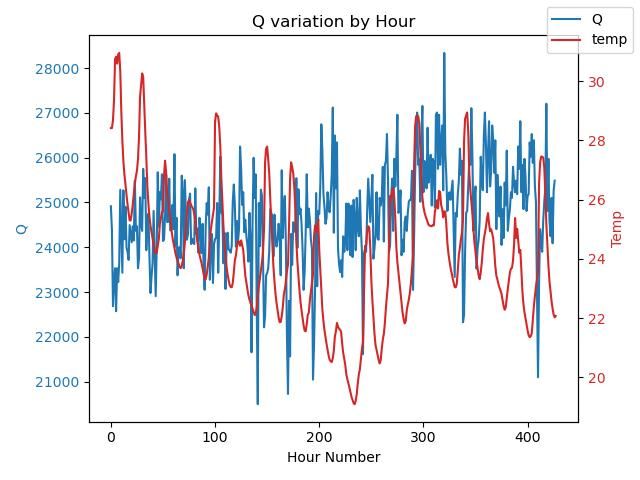Posted by Martin Kyte on 16/07/2023 12:21:22:
Because the original question was about the philosophy of building a pendulum clock. I said that my take was that no other external time reference should be used in the clock except the pendulum itself. Therefore the derivation of the lookup table employed by the clock for compensation should not use technologies in advance of the pendulum. As I say it’s my viewpoint. For testing or manufacture you can use what you like.
regards Martin
Maybe worth repeating what's controversial about my clock. Not terribly clear from the various forum threads, which wander.
In short:
- There's a moderately well-engineered pendulum in a stiffish frame. Not done yet, but the pendulum is designed to run in a vacuum
- Impulsed by an electromagnet. A microcomputer can alter when an impulse occurs and how powerful the impulse is. I believe it's less intrusive and more tunable than any mechanical escapement because there's no physical contact and the computer is far faster than the pendulum
- The pendulum has no temperature or barometric compensation. Instead, it's fitted with electronic sensors allowing the microcontroller to compensate for them in the 'gear train'
- The gear train is electronic, and able to convert any period into DD/MM/YY HH:MM
 S, potentially with microsecond or higher precision
S, potentially with microsecond or higher precision
- Controversial:
- Stage 1: the pendulum/clock runs and collects its notion of time, plus temperature and air pressure data, more the better.
- Stage 2: the data is analysed. The period of each beat is compared with a high-accuracy clock, either GPS or NTP, giving the pendulum's actual period as modified at the time by temperature and pressure. The analysis allows the pendulum's period to be predicted at any combination of temperature and pressure with a simple formula
- Stage 3: the clock's "gear train" is configured to use the formula. GPS and NTP are disconnected, and the clock operates independently. When the pendulum ticks, the clock, knowing what the temperature and pressure are, calculates what the pendulum period should be, and counts that.
Stages 1&2 create what Martin calls a look-up table. Actually not a table but conceptually similar. Although the statistical analysis is high-end, I don't think it's philosophically different from what conventional clockies do. Having built a clock, they're run for a known period of time, comparing them with a better clock: solar system, TIM, Radio pips, whatever. Then adjustments are made to improve the timekeeping. The clock might be left for days, weeks or months between manual checks, whilst I use a computer and better clock to check every beat. Doing so gives a fine-grained picture of what the pendulum is doing, but I think it's essentially the same process. Looking closely shows pendula are noisy in the signal sense, i.e varying in frequency. Many of these variations average out, so a pendulum clock can be a good time-keeper over months, even though its pendulum is noisy. If it were known, the same clock's short term performance could be distinctly wobbly.
High-accuracy requires frequency wobble (noise) to be reduced. Conventionally done by smart mechanisms implemented with the best materials and workmanship. In contrast, my clock reduces noise by applying a sort of digital filter. When the pendulum ticks, the microcontroller ignores the actual time taken, which being noisy is always slightly wrong, and instead counts the time the pendulum would have taken had it behaved perfectly. Perfect was identified statistically during Stage 2.
The approach corrects for temperature, air-pressure, and the maths also filters out pendulum noise. So rather than needing to build a really good high-end pendulum, I'm hoping to do better with a cruder set-up. My pendulum can be noisy provided it reliably beats within its previously determined statistical range. I've not thought about how the filter effects Flicker and the other exotic noise phenomena that upset clocks of all types.
The clock depends on a mass of previous high-accuracy observations. Further, in independent mode, the pendulum's actual period isn't measured or used by the clock, which is unusual! Instead the pendulum generates events, from which period is inferred. The time quantity in the calculation comes highly polished from the statistical analysis, and the current temperature and pressure, not direct from the pendulum. Hmmm!
However, maybe filtering isn't controversial in that conventional clocks do it too. I argue that coincidental mechanical averaging is also a filter. A clockmaker might assume that his carefully set-up and compensated pendulum really does beat exactly 1 second every time, but they never do. I suggest the apparent accuracy of most pendulum clocks results from averaging of which the builder is unaware.
Accuracy issues only become apparent when enough precision is added to the display, or the clock is compared with a much better timekeeper. Quite serious timekeeping errors aren't obvious on a minute hand, though they often appear on the seconds. Trouble really kicks off displaying deciseconds and below, and millisecond accuracy is very challenging.
Dave
Dave
John Haine.



 S, potentially with microsecond or higher precision
S, potentially with microsecond or higher precision

